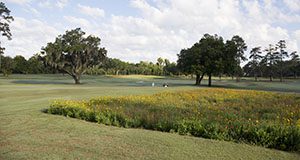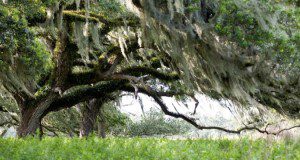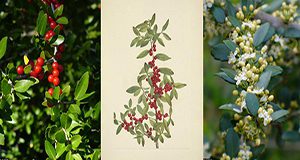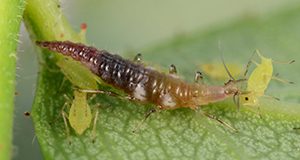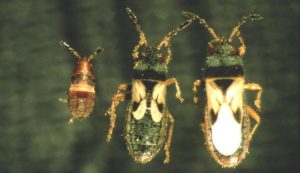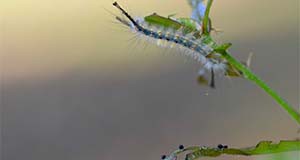Habitat loss from urbanization and agricultural intensification is reducing native bee and monarch butterfly populations, but golf courses in urban areas present an opportunity to mitigate the negative effects of urbanization on pollinators and the environment. It is feasible to enhance a golf course’s ability to support more species and a greater abundance of wildlife by planting the 40% to 70% of acreage not used for the game of golf in wildflowers. With the most golf courses of any US state, Florida is poised to set the stage for golf course environmental stewardship. This 8-page fact sheet written by Rebecca Nestle, Grace Cope, Nicole Benda, and Adam G. Dale and published by the UF/IFAS Entomology and Nematology Department is intended to provide guidelines for Florida golf course superintendents to aid in their efforts to conserve important wildlife while reducing maintenance inputs and associated costs.
https://edis.ifas.ufl.edu/in1316
Tag: Adam G. Dale
Key Plant, Key Pests: Oak (Quercus spp.)
This series of Key Plant, Key Pests publications is designed for Florida gardeners, horticulturalists, and landscape professionals to help identify common pests associated with common Florida flora. This new 9-page publication provides information and general management recommendations for borers, caterpillars, insect-induced galls, twig girdlers, oak leaf blister, root and butt rot, Tubakia leaf spot, mistletoe, psocids, lace bugs, woolly aphids, powdery mildew, Spanish and ball moss, and lichens. Written by Juanita Popenoe, Caroline R. Warwick, Adam G. Dale, and Alfred Huo, and published by the UF/IFAS Environmental Horticulture Department.
https://edis.ifas.ufl.edu/ep596
Yaupon Holly Culture and Pest Management for Tea Production and Ornamental Use
Yaupon holly, Ilex vomitoria Aiton, is an evergreen woody plant native to the southeastern United States. The species is widely used as a landscape ornamental plant because it tolerates a wide range of soil and environmental conditions, is available in various forms, and attracts wildlife, especially native birds. Recently, there has been a resurgence of interest in cultivating the plant for the caffeinated beverages that can be made from its leaves. This 8-page fact sheet written by Matthew A. Borden, Mark A. Wilhelm, and Adam G. Dale and published by the UF/IFAS Entomology and Nematology Department provides a guide to managing yaupon holly and protecting it from pests. It will be useful to both commercial growers and homeowners interested in growing this beautiful and useful plant.
https://edis.ifas.ufl.edu/in1299
Managing Plant Pests with Soaps
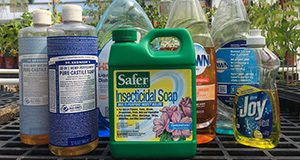
Home gardeners and professionals frequently discuss the use of soap products to control plant pests. Limited and conflicting information on this topic has resulted in confusion and misuse of products. It is important to recognize that all soaps are not equal in safety or efficacy in plant-pest management. This 5-page fact sheet written by Matthew A. Borden and Adam G. Dale and published by the UF/IFAS Entomology and Nematology Department describes some of the different types of soaps and recommendations for proper, legal, and safe use of these products to manage pests.
http://edis.ifas.ufl.edu/in1248
Natural Products for Managing Landscape and Garden Pests in Florida
Pest control professionals and homeowners throughout Florida and the southeastern US are seeking effective options that are safer for people and the environment than some conventional synthetic pesticides. There is also rising interest in organic gardening, which relies on natural pesticides. This 13-page fact sheet describes natural products for use in residential landscapes and gardens. Written by Matthew A. Borden, Eileen A. Buss, Sydney G. Park Brown, and Adam G. Dale, and published by the UF/IFAS Department of Entomology and Nematology, revised September 2018.
http://edis.ifas.ufl.edu/in197
Managing Southern Chinch Bug in Warm Season Turfgrasses
Southern chinch bug, Blissus insularis Barber, is the most damaging insect pest of St. Augustinegrass in the United States. St. Augustinegrass is the most common turfgrass used in Florida. The ubiquity of this single turfgrass species makes southern chinch bug an economically important pest in the state. In fact, chinch bugs cost Florida homeowners and professionals millions of dollars every year. This 7-page fact sheet written by Eileen A. Buss, Brianna M. Whitman, and Adam G. Dale and published by the UF/IFAS Department of Entomology and Nematology describes the biology of the pest and the damage it causes and lists ways to scout and monitor for chinch bugs and some strategies for control of the pest.
http://edis.ifas.ufl.edu/lh036
Impervious Surface Thresholds and the Pace to Plant Technique for Planting Urban Red Maple Trees
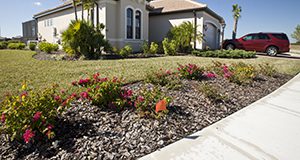
A foundation of integrated pest management (IPM) in urban landscapes is to put the right plant in the right place. This preventive tactic can reduce plant stress, pest infestations, and subsequent pesticide applications. Many urban tree species have more insect and mite pests in urban landscapes than in surrounding natural areas. This is due in part to stress created by impervious surfaces like roads and sidewalks that make the air hot and the soil dry. For red maples (Acer rubrum), more impervious surface area adds stress and worsens tree condition. This 4-page publication written by Adam G. Dale, Steven D. Frank, Elsa Youngsteadt, Barbara Fair, Julieta Sherk, and Michael Just and published by the UF/IFAS Department of Entomology and Nematology focuses on selecting red maple planting sites that will help reduce tree stress and scale insect pests by maximizing surfaces permeable to water.
http://edis.ifas.ufl.edu/in1185
New Featured Creatures for October 2016
- A Bark Beetle Hypothenemus eruditus Westwood, 1836
http://edis.ifas.ufl.edu/in1147 - Fourlined Plant Bug Poecilocapsus lineatus (Fabricius)
http://edis.ifas.ufl.edu/in1151 - Insidious Flower Bug, Minute Pirate Bug Orius insidiosus Say
http://edis.ifas.ufl.edu/in1148 - Longtailed Mealybug Pseudococcus longispinus (Targioni Tozzetti)
http://edis.ifas.ufl.edu/in1149 - Tuliptree Scale Toumeyella liriodendra (Gmelin)
http://edis.ifas.ufl.edu/in1150
Insect Pest Management on Turfgrass
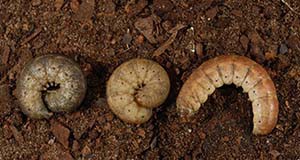
Turfgrass is grown in many environments and for different uses, including home lawns, parks, athletic fields, cemeteries, golf courses, sod farms, pastures, and right-of-ways. The intensity of turfgrass insect management largely depends on the turf species, variety, and its intended use. This eighteen-page fact sheet describes how to manage a variety of insect pests including armyworms, bermudagrass mite, cutworms, fire ants, ground pearls, hunting billbug, mole crickets, scales/mealybugs, southern chinch bug, twolined spittlebugs, tropical sod webworm, and white grubs. Written by Eileen A. Buss and Adam G. Dale, and published by the Entomology and Nematology Department.
http://edis.ifas.ufl.edu/ig001
Landscape Integrated Pest Management
Every landscape manager has a pest management toolbox, which contains tools that represent different management strategies. People can be quick to use pesticides, but an integrated approach using multiple tools can be much safer, have longer lasting beneficial effects, and in some cases cut costs. This 5-page fact sheet will help Extension agents and specialists, lawn and landscape managers, Florida Master Gardeners, and homeowners develop long-term sustainable pest management programs using an Integrated Pest Management (IPM) framework. Written by Adam G. Dale and published by the Department of Entomology and Nematology.
http://edis.ifas.ufl.edu/in109
